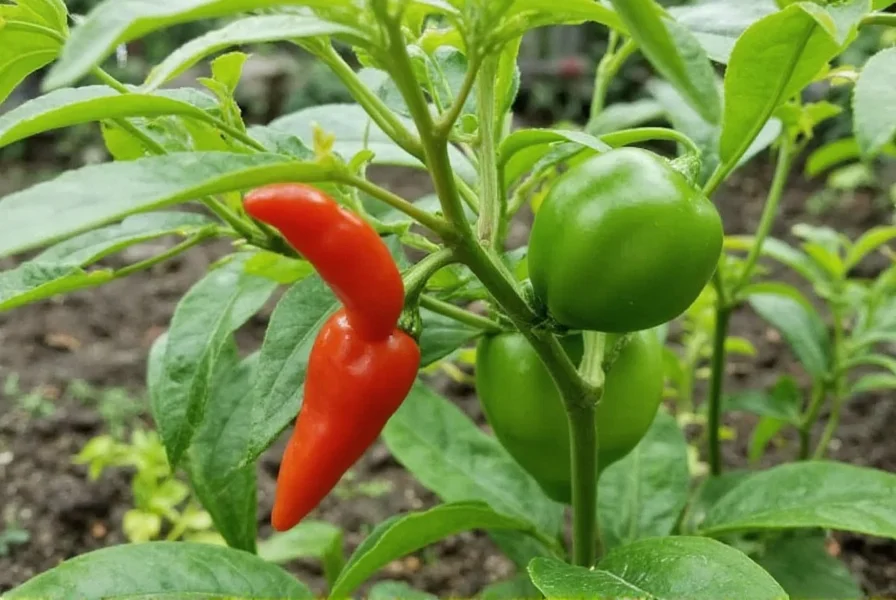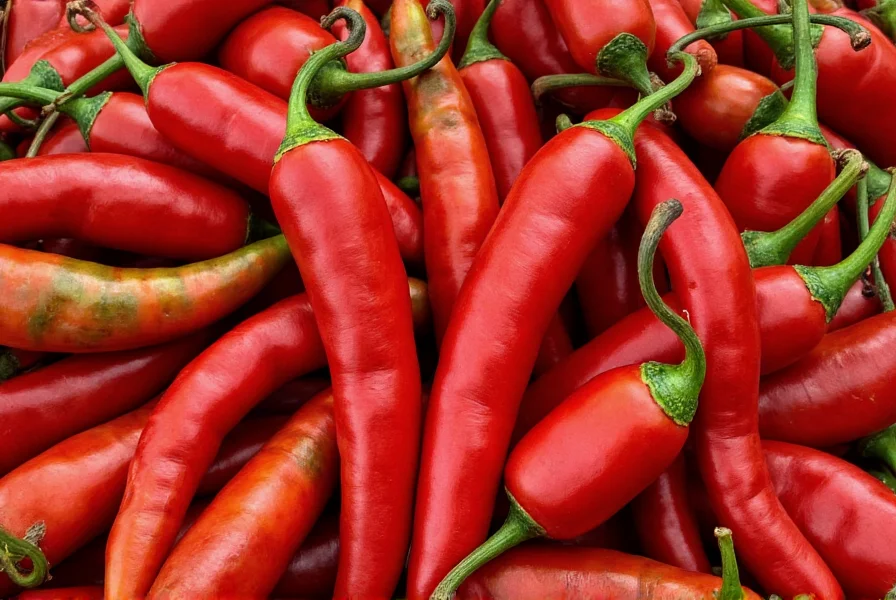Fresno chilies (Capsicum annuum) represent one of the most versatile medium-heat peppers in culinary applications. These conical-shaped peppers measure 2-3 inches long with smooth, glossy skin that transitions from bright green to vibrant red as they mature. Unlike their close relative the jalapeño, Fresnos maintain a consistently thinner wall and slightly tapered shape that makes them ideal for both fresh and cooked preparations.
Physical Characteristics and Identification
Identifying authentic Fresno chilies requires attention to specific visual markers. Young green Fresnos display a distinctive tapered point and smooth, unblemished skin with minimal striations. As they ripen to their characteristic red hue, they develop deeper color saturation without becoming wrinkled like some other varieties. The stem attachment should be firm and green, indicating freshness. When selecting Fresnos, look for peppers with consistent color and firm texture—avoid any with soft spots or wrinkles which indicate age.

Heat Level and Flavor Profile
The heat level of Fresno chilies ranges from 2,500 to 10,000 Scoville Heat Units, placing them firmly in the medium category. This makes them noticeably milder than habaneros but slightly hotter than many jalapeños. What truly distinguishes Fresnos is their complex flavor profile: bright and grassy when green, developing pronounced berry-like sweetness when red, with a distinctive tangy finish that lingers pleasantly.
| Pepper Variety | Scoville Range | Flavor Characteristics |
|---|---|---|
| Fresno (green) | 2,500-5,000 SHU | Bright, grassy, slightly sweet |
| Fresno (red) | 5,000-10,000 SHU | Berry-like sweetness, tangy finish |
| Jalapeño | 2,500-8,000 SHU | Grassy, vegetal, less complex |
| Serrano | 10,000-23,000 SHU | Sharp, bright, more intense heat |
Culinary Applications and Best Uses
Fresno chilies shine in applications where their delicate flavor can be appreciated. Their thinner walls make them superior to jalapeños for fresh salsas and pico de gallo, where they provide heat without overwhelming texture. When roasted, red Fresnos develop remarkable depth that works beautifully in:
- Creamy sauces and aiolis (try blending with avocado and lime)
- Marinades for poultry and seafood
- Infused oils and vinegars
- Fresh garnishes for tacos and ceviche
- Pickled preparations that highlight their crisp texture
Professional chefs often prefer Fresnos over jalapeños in dishes requiring subtle heat with complex flavor notes. The fresno chili vs jalapeno comparison reveals Fresnos offer more nuanced flavor with less vegetal bitterness, making them particularly valuable in refined dishes where pepper flavor matters as much as heat.
Growing Fresno Chilies
Home gardeners find Fresno chilies relatively straightforward to cultivate. They thrive in warm climates with full sun exposure and well-draining soil. Start seeds indoors 8-10 weeks before last frost, then transplant outdoors when soil reaches 60°F. Plants typically reach 24-30 inches in height and produce abundant fruit over a long season. For best results, harvest green Fresnos when firm and glossy, allowing some to ripen to red on the plant for sweeter flavor. The growing fresno chilies process yields peppers with superior flavor when plants receive consistent moisture without waterlogging.

Substitutes and Storage
When authentic Fresnos aren't available, understanding proper fresno chili substitute options becomes essential. For fresh applications, serranos provide similar heat but with sharper flavor—use half the amount. For cooked dishes, a combination of jalapeño and a pinch of cayenne better approximates Fresno's complex profile. In emergencies, canned green chilies work for texture but lack the bright flavor.
Proper storage extends Fresno chili shelf life significantly. Keep unwashed peppers in a perforated plastic bag in the refrigerator crisper drawer for up to three weeks. For longer preservation, roast and freeze them in airtight containers, or pickle them using a standard vinegar-sugar brine. Never store Fresnos at room temperature, as they deteriorate rapidly.
Frequently Asked Questions
How hot is a fresno chili compared to other common peppers?
Fresno chilies range from 2,500-10,000 Scoville units, placing them between jalapeños and serranos in heat. Green Fresnos typically measure 2,500-5,000 SHU while red versions reach 5,000-10,000 SHU. They're noticeably milder than habaneros (100,000-350,000 SHU) but offer more complex flavor than standard jalapeños.
What's the difference between green and red Fresno chilies?
Green Fresnos have a brighter, grassier flavor with moderate heat (2,500-5,000 SHU), while red Fresnos develop deeper berry-like sweetness with increased heat (5,000-10,000 SHU). The red variety contains more capsaicin and sugars due to extended ripening on the plant, making them better for sauces and cooked applications where sweetness matters.
Can I substitute jalapeños for Fresnos in recipes?
Yes, but with adjustments. Jalapeños have thicker walls and more vegetal flavor. Use 25% fewer jalapeños than Fresnos called for, and consider adding a pinch of sugar to compensate for Fresnos' natural sweetness. For fresh applications like salsas, serranos make a better substitute due to similar wall thickness, though they're hotter—use half the amount.
How should I prepare Fresno chilies for cooking?
For fresh applications, simply remove seeds and membranes to control heat. For roasting, place directly over gas flame or under broiler until charred, then steam in a covered bowl before peeling. Fresnos' thin walls mean they cook faster than jalapeños—watch carefully to avoid burning. When pickling, slice thinly and use a vinegar-sugar brine with garlic and oregano for authentic flavor.











 浙公网安备
33010002000092号
浙公网安备
33010002000092号 浙B2-20120091-4
浙B2-20120091-4